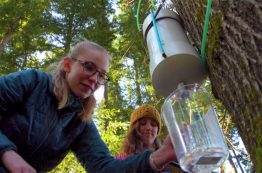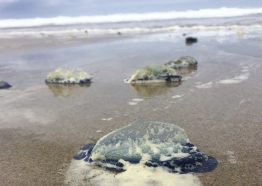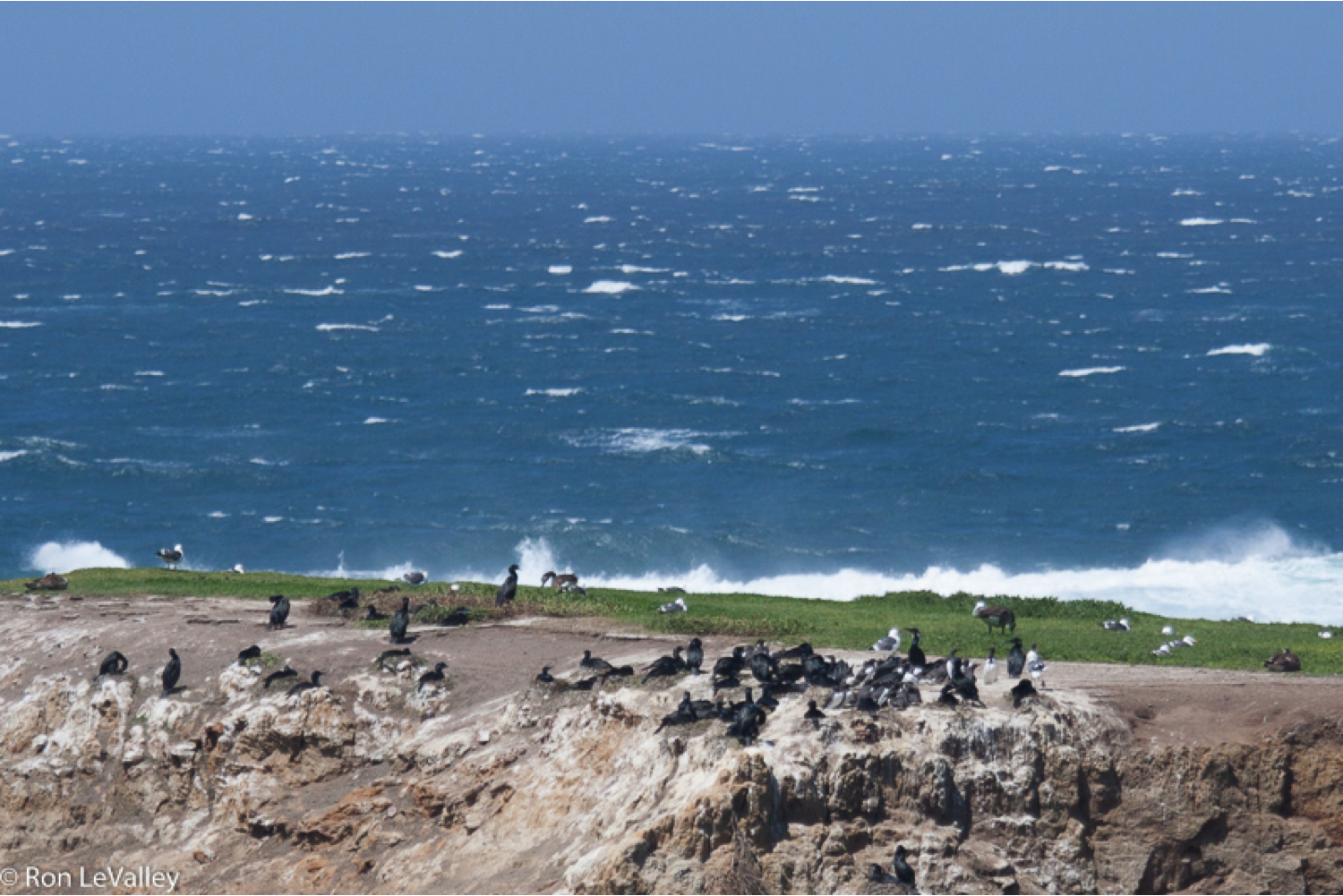Scientists from the University of Washington are testing the viability of making maple syrup in the Pacific Northwest. Long associated with Canada or Vermont, this sweet forest product that has graced many a breakfast table may be part of this region’s future. Washington maple syrup is made from the watery-looking sap of bigleaf maple trees, one of the most abundant native hardwood trees in the Pacific Northwest.
Read more at UW News »‘By-the-wind sailor’ jellies wash ashore in massive numbers after warmer winters
As their name suggests, by-the-wind sailor jellyfish know how to catch a breeze. Using a stiff, translucent sail propped an inch above the surface of the ocean, these teacup-sized organisms skim along the water dangling a fringe of delicate purple tentacles just below the surface to capture zooplankton and larval fish as they travel. At the mercy of the wind, these jellies can wash ashore and strand — sometimes numbering in the trillions — on beaches around the world, including up and down the U.S.
Read more at UW News »‘Forgetting Nature’: Peter Kahn offers warning in short documentary film
The documentary film is brief but its message is powerful: We humans are losing our connection to the natural world, at our great peril. “In some sense, we think we are the most advanced culture — we take such pride in technology and advancement,” says Peter Kahn, University of Washington professor in the Department of Psychology and the School of Environmental and Forest Sciences.
Read more at UW News »How five global regions could achieve a successful, equitable ‘Blue Economy’
The future of an equitable and sustainable global ocean, or “Blue Economy,” depends on more than natural or technological resources. A new study finds that socioeconomic and governance conditions such as national stability, corruption and human rights greatly affect different regions’ ability to achieve a Blue Economy — one that is socially equitable, environmentally sustainable and economically viable. A paper published March 17 in Nature by the University of Washington-based Nippon Foundation Ocean Nexus Center suggests how different parts of the world might begin to achieve these goals.
Read more at UW News »Could COVID-19 be helping Alaska’s beluga whales get some ‘me time’?
When you try to imagine what a happy, calm beluga whale looks like, what images do you conjure up? A smiling white blob, reclining on a chaise lounge with a shrimp cocktail? A zen-like cetacean emerging from a meditation workshop session with a rolled-up mat under its flipper? For Manuel Castellote, a researcher at the Cooperative Institute for Climate, Ocean and Ecosystem Studies (CICOES), the image is less absurd but more exciting.
Read more »





